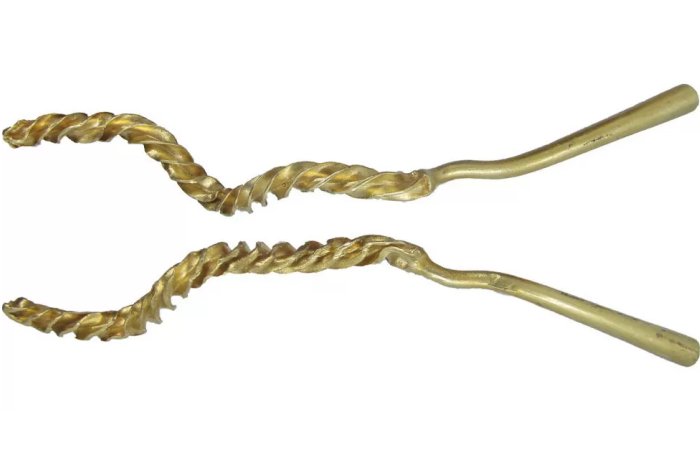Jan Bartek – AncientPages.com – A metal detectorist has discovered a part of a Bronze Age twisted gold torc in a field near Mistley, on the River Stour in EsSєx, UK.
The gold torc has been examined by experts and declared a treasure by a coroner. The artifact is estimated to be about 3,000-year-old and it is the “first-ever” torc “reported as treasure from EsSєx.”

The Bronze Age gold torc is a unique find in EsSєx. Credit: Colchester and Ipswich Museum Service
According to the Portable Antiquities Scheme “EsSєx saw increased activity in the Bronze Age. There is evidence of changing burial traditions with the arrival of Urnfield and barrow complexes and also developing agricultural practices.
Many incredible Bronze Age hoards have been found scattered across the landscape, providing insight into the development of metallurgy and ritual practice in Britain at this time. It is not certain whether these objects were simply the resources of a metalworker who had buried them in the ground never to return (whether intentionally or otherwise).”
British Museum experts have examined the gold torc and confirmed the jewelry was made from at least 75% gold, about 18% silver, and some copper.
The torc, which is 147mm long (5.7in) long, was crafted from a rectangular rod with four grooves cut into it.
Finds liaison officer Lori Rogerson said despite being made of prehistoric gold, “it could have been made yesterday”, which is “mind-blowing.”
“Gold metalwork from the Bronze Age is rare from EsSєx.
“It’s always nice to work with prehistoric gold, but you have to remind yourself it is over 3,000 years old,” Rogerson told the BBC.
According to Rogerson, a “highly skilled” goldsmith worked on it and “would have had to twist it, it’s a really soft material so it is at risk of tearing,”
“He or she would have known just the right point to stop before it broke, while getting those twists in,” she added.
Colchester Museum hopes to acquire the twisted Bronze Age gold torc.
Written by – Jan Bartek – AncientPages.com Staff Writer





